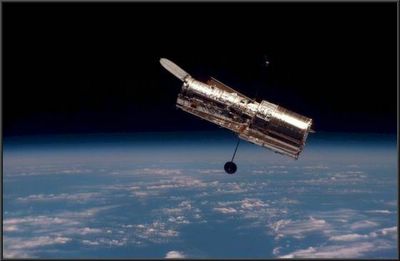
A space probe designed by the University of Maryland named Deep Impact. Will crash into a comet on July 4th, and if conditions are right the impact could be visible from Earth.
"Deep Impact, launched Jan. 12, has two parts, an "impactor" that will be released to collide with Tempel 1, possibly creating a stadium-size gouge, and a fly-by craft with instruments to observe the collision." - space.com
I'm looking forward to this, and crossing my fingers for no cloud cover on the 4th!
-KJW


7 comments:
Kev - that is really neat! Hope we can see it too. We will be in Maine and will definatly have a good view if there aren't any clouds.
Heather
I'm hopin' for no cloud cover up in VH on the 4th... I have a good feelin' about it!
wowzer, might have to bring up the telescope for this one too...sure it will be okay with mum...
That is a picture of Hubble by the way.. I forgot to mention it will be focused on the comet during impact. I noticed that this entry implied that the picture was the "Deep Impact" probe.
What was I thinking!!
Nice info!
DEEP IMPACT
An immense flash of light was generated when NASA's Deep Impact probe collided with Comet Tempel 1 at 1:52 am on July 4, which provided an excellent light source for the two cameras on the Deep Impact mother ship. Scientists theorize the 820-pound impactor vaporized deep below the comet's surface, at a speed of about 10 kilometers per second (6.3 miles per second or 23,000 miles per hour).
"You cannot help but get a big flash when objects meet at 23,000 miles per hour," said Deep Impact co-investigator Dr. Pete Schultz of Brown University. "The heat produced by impact was at least several thousand degrees Kelvin and
at that extreme temperature just about any material begins to glow. Essentially, we generated our own incandescent photo flash for less than a second."
The flash created by the impact was just one of the visual surprises that confronted the Deep Impact team. Preliminary assessment of the images and data downlinked from the flyby spacecraft have provided an amazing glimpse into the life of a comet.
For more information and photos of the impact: www.nasa.gov
Photo of Deep Impact
Post a Comment